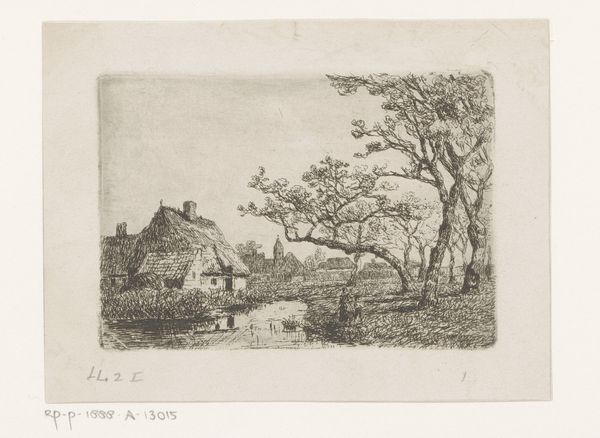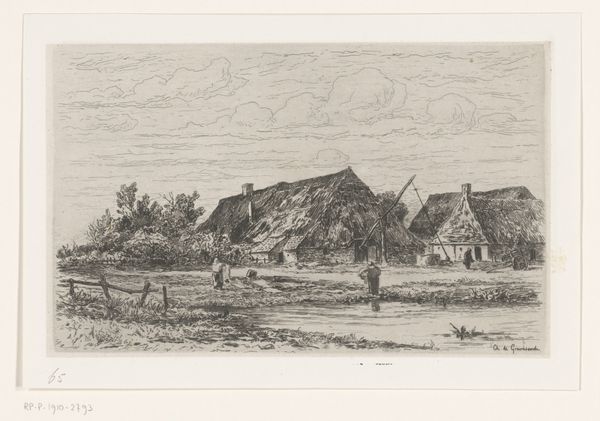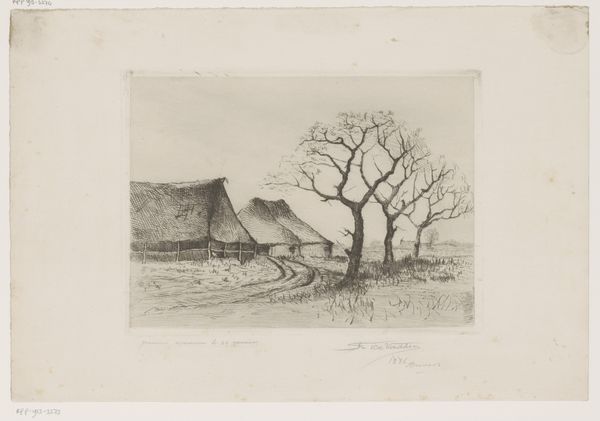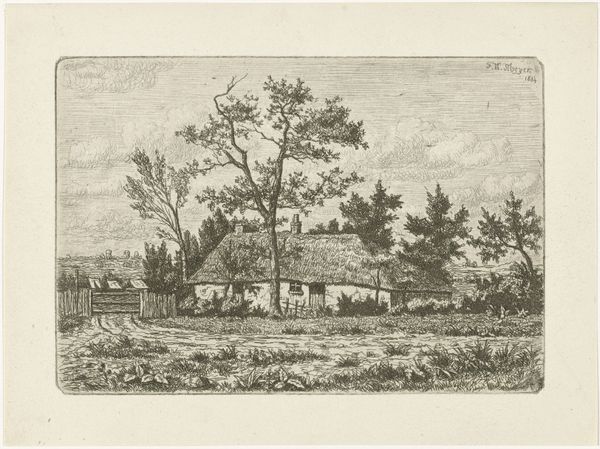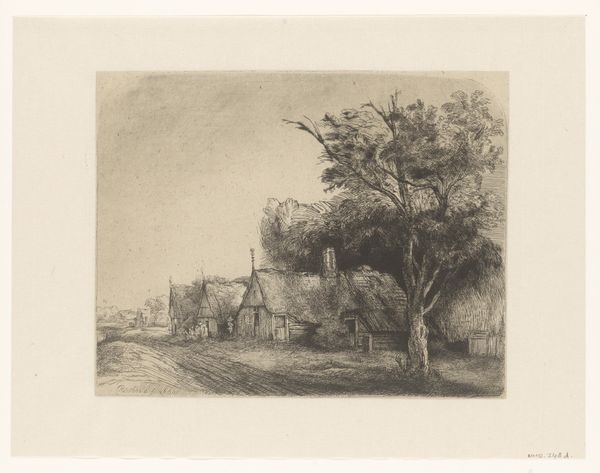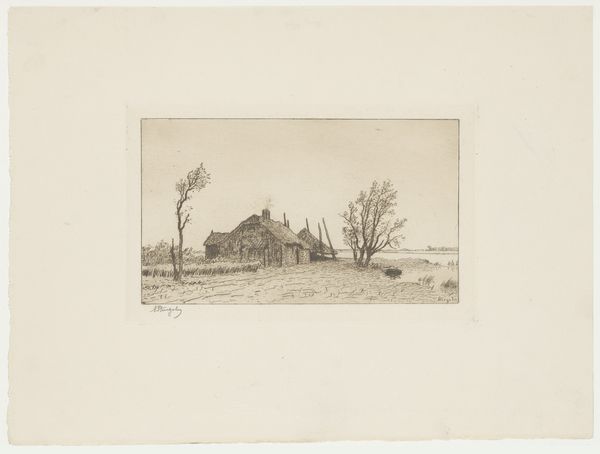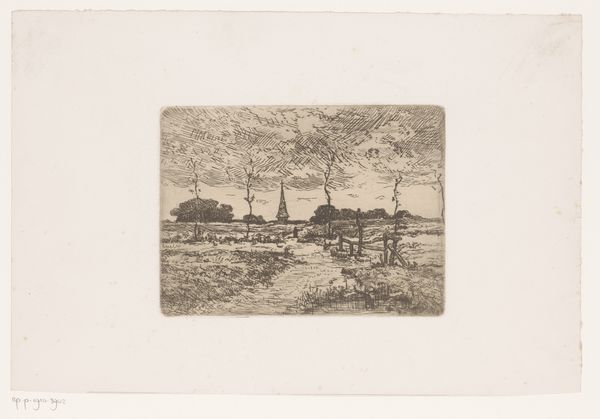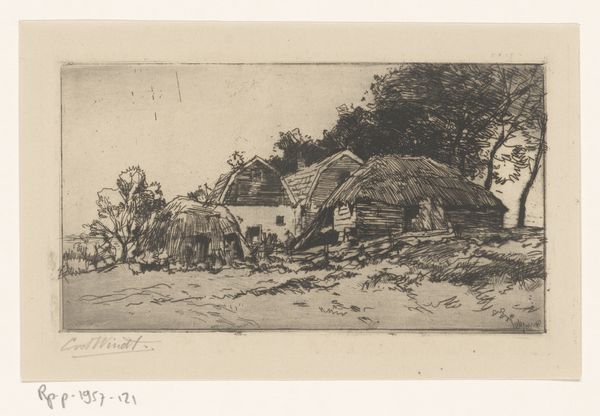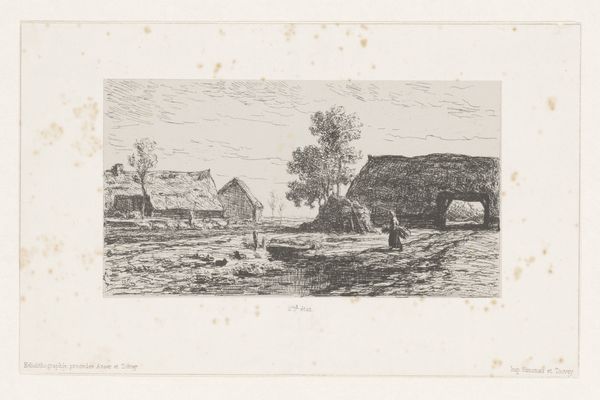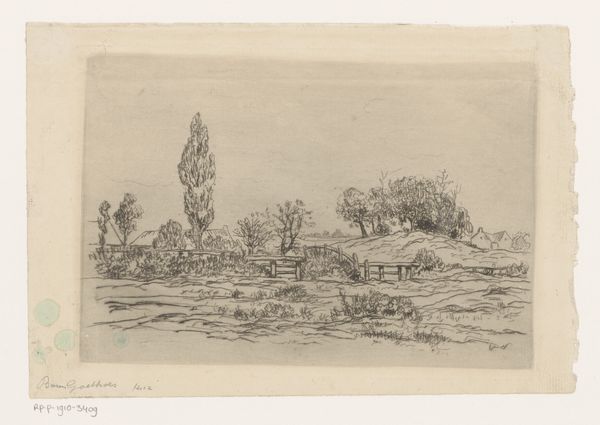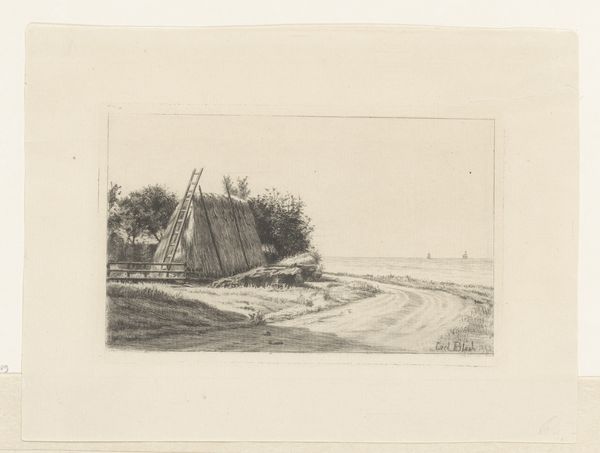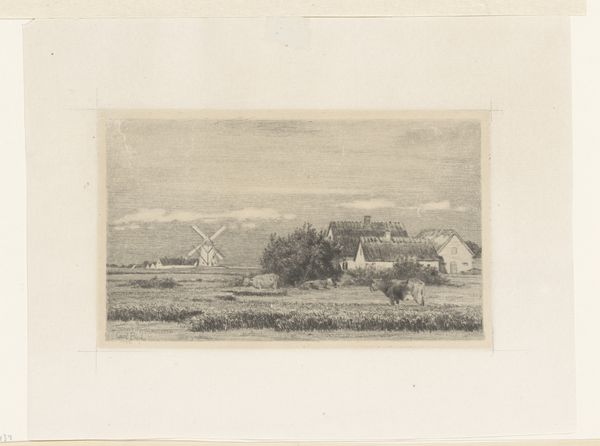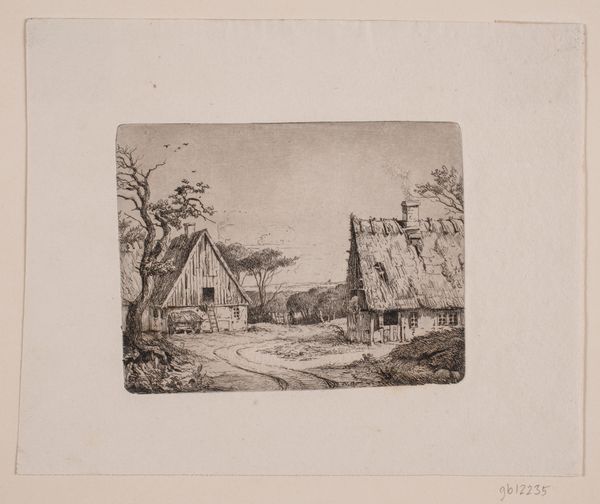
print, etching, plein-air
#
ink paper printed
# print
#
impressionism
#
etching
#
plein-air
#
landscape
#
linocut print
Dimensions: height 85 mm, width 135 mm
Copyright: Rijks Museum: Open Domain
Curator: Welcome. We are standing before Carel Nicolaas Storm van 's-Gravesande's "Landscape with Three Haystacks," a print from around 1872, now residing here at the Rijksmuseum. Editor: It has this strangely quiet melancholy. The etched lines create such subtle variations, evoking the quiet, perhaps monotonous life in the countryside. Curator: Yes, Gravesande's expert use of the etching technique provides an incredibly fine and subtle articulation of the landscape, especially the depiction of light interacting with the simple forms. Notice the stark horizontality of the fields meeting the conical verticals of the haystacks. Editor: This makes me wonder, though: what did agrarian life truly look like at that time for peasants in the Netherlands? While it evokes this simple tranquility, were they able to live dignified lives under harsh systems of feudal obligation? It is worth thinking about who this scene centers versus who remains at its margins. Curator: Well, without engaging in presentism, we can also read how Gravesande attempts to transcribe this light and texture as impressions. See the linocut quality achieved through varied and controlled mark-making which speaks more to the artist’s project than an attempt at realistic record. The light, composition, and texture generate affect as opposed to documentation. Editor: I take your point, and I think there is something valid about looking beyond pure formal qualities, as if art exists outside a broader political structure. Consider that art could both represent and perpetuate the existing unequal power structures. Shouldn't art activate questions of power and challenge us to see the world differently? Curator: I acknowledge the vital contributions to such critiques of representational value; however, Gravesande's print allows an exercise in pictorial problem-solving. How, within a single color matrix, does an artist differentiate mass and void, and what are the semiotic potentials embedded within it? Editor: As the field of art criticism continuously widens to include intersectional and previously disenfranchised perspectives, readings of landscapes like this have come to reveal a more complex reality. While the artist might focus on impressions and light, such choices have political implications too. Curator: Yes, well, hopefully we have illuminated some dimensions and demonstrated a robust approach. Editor: I would say it offers perspectives worth deeper exploration, pushing beyond what we simply see.
Comments
No comments
Be the first to comment and join the conversation on the ultimate creative platform.
